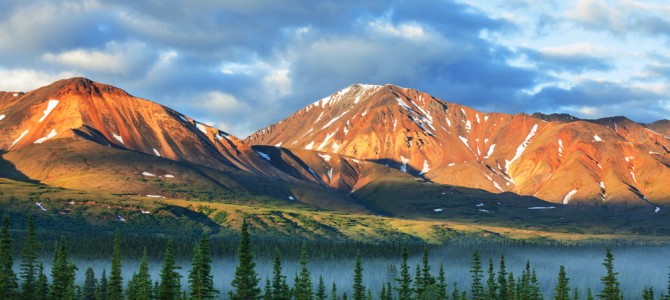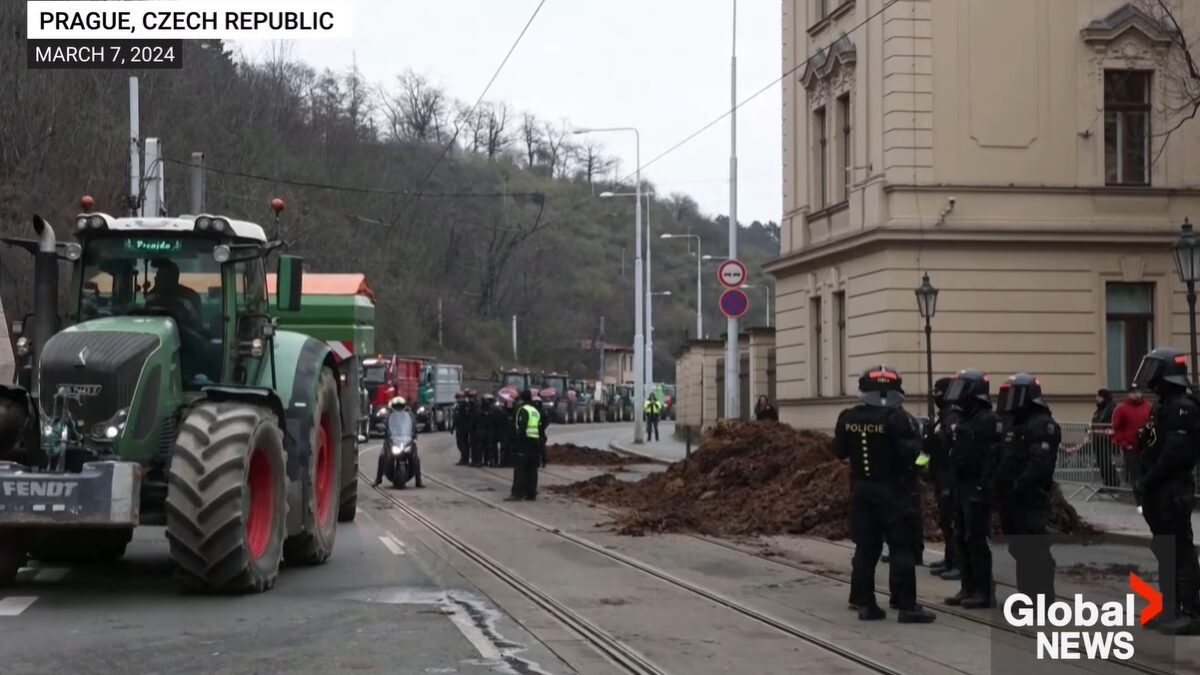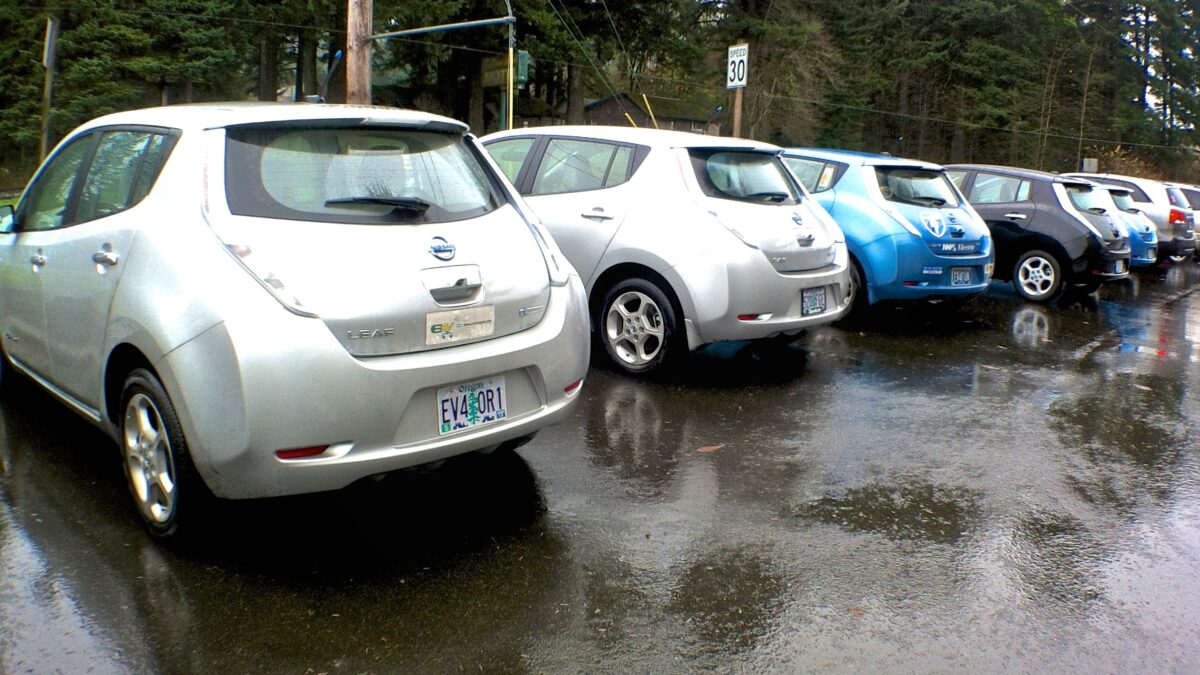
President Obama is touring Alaska this week to talk about climate change. He’ll be visiting some retreating glaciers near the southern coast and some Alaska Native towns in the western and northwestern parts of the state that represent, according to his administration, “the front lines of climate change.”
That is, the White House is using Alaska as a backdrop, an admittedly striking prop in a rather obvious piece of political theater. The opening scene came a day before his trip began, when the administration announced it was officially renaming the largest mountain in North America, Mount McKinley, henceforth to be called Denali, the mountain’s indigenous name and, actually, its official state name since 1975. Also, incidentally, that’s the name most Alaskans have always used.
The mountain thing really took off in the media. The New York Times called it a bid “to improve relations between the federal government and the nation’s Native American tribes.” But it damaged White House relations with Ohio, home state of President William McKinley, for whom the mountain was named in 1896. Trump said it was an insult to Ohio and he’d change Denali back to Mount McKinley. House Speaker John Boehner, also an Ohioan, said he was “deeply disappointed,” and Ohio lawmakers denounced the name change as “constitutional overreach.” Meanwhile, Lisa Murkowski, Alaska’s senior senator, tweeted a video of herself with the mountain in the background, saying she supports the renaming. And so on.
Today we are honored to recognize America’s highest peak officially as Denali, or ‘The Great One.’ http://t.co/lxd3HKAOBo
— Sen. Lisa Murkowski (@lisamurkowski) August 30, 2015
It’s All Just an Act
But the show is just getting started. During his jaunt through Alaska, the president will tape an episode of NBC’s “Running Wild with Bear Grylls,” the survival show that sometimes features Grylls doing extreme things, like drinking his own urine, which he won’t be doing with the president despite an online petition filed with the White House.
In a way, taping with Grylls is appropriate for a trip like this, since the TV show, whose premise is based on the notion that Grylls is performing survival feats on-camera in real time, has been accused of staging various incidents multiple times in recent years.
What they won’t be staging, you can almost hear a White House press flack saying, is the recession of Exit Glacier in southern Alaska, where the duo will be filming. The glacier has shrunk by 1.25 miles in recent decades.
Visit Alaska for a Second
Now, in the spirit of mountain naming and glacial retreats, allow me to give a little background on all this from a personal perspective. I grew up in the Matanuska-Susitna Valley, about 40 miles north of Anchorage, Alaska, in a town called Palmer, which is next to Wasilla, where Sarah Palin was once mayor (and where, during her tenure, I happened to work for the parks and rec crew on summer breaks during high school, mowing ball fields, painting picnic tables and pulling spawned out, rotting salmon from Wasilla Lake at the end of the summer).
At the east end of the valley is a dramatically spired mountain called Matanuska Peak. The name of the mountain and valley both are derived from the Matanuska Glacier and Matanuska River, which separates the east end of Palmer from the foot of the mountain.
The other half of the valley’s name comes from the Susitna River (and glacier), which divides the Talkeetna Mountains from the Alaska Range to the west and north. The Matanuska divides the Talkeetna from the Chugach Mountains to the south and east, and both rivers converge in the Knik Arm, a broad flat plain of tidal marsh that stretches from the western edge of the valley to the Cook Inlet and the port of Anchorage.
Matanuska Peak rises about 5,600 feet above sea level and forms one of the most prominent features of the Chugach Mountains, visible from almost any point in the valley, especially Palmer, where it looms large and magnificent.
Not everyone calls it Matanuska Peak, though. Some people call it Byers Peak, for some reason. Byers could be a reference to Byers Lake, a small lake in Denali State Park, near the town of Talkeetna on the opposite side of the valley from Palmer. They say Byers Lake was named after a fisherman who liked to go there in the 1950s, before statehood.
But Matanuska Peak is the mountain’s official name. It’s not an Alaska Native name, like Denali, but comes from a Russian term, a reference to “copper river people,” which is perhaps a reference to the Copper River, a 290-mile river that flows out of the Wrangell Mountains, northeast of the Chugach Mountains. The indigenous name for Matanuska is Ch’atanhtnu, a word from the Athabaskan-speaking Tanaina people native to south central Alaska. But I have never heard anyone call it that. Susitna, on the other hand, is a native word. It means “sandy river.” People from the valley simply refer to it by the abbreviation, Mat-Su.
Alaska, a Land of Changes
The Mat-Su Valley, as we call it, was formed by the gradual retreat of the Matanuska and Susitna glaciers, which once covered the entire valley in a massive sea of ice. The 27-mile-long Matanuska Glacier, the largest glacier accessible by car in the United States, has not seen any change in its mass in 30 years. Susitna Glacier is much smaller, but it has seen some change in recent years: a 7.9 earthquake in 2002, the largest in North American in 150 years, exposed a previously unrecognized fault running along the glacier.
All of which is to say, yes, Alaska is a remarkable place of immense, even breathtaking, natural beauty. But it has always been a land of changes. The hubris of the White House and its fellow travelers in the environmental movement is to assume that Alaska’s retreating glaciers and the fluctuations in its Arctic coastline are caused by man-made climate change. Even worse is the view that we need to ratchet down oil and gas development along the Arctic coast (despite the go-ahead for Shell), forbid drilling in the vast unpeopled plains of the Arctic National Wildlife Refuge, and effectively deprive Alaskans of their major industries.
It wouldn’t be so bad if all the president wanted to do was come to Alaska, hang out on a glacier with his celebrity friends and rename the big mountain. But that’s not why he’s up there, and Alaskans who rely on the industries he’s implicitly targeting with his climate-change rhetoric know it.









